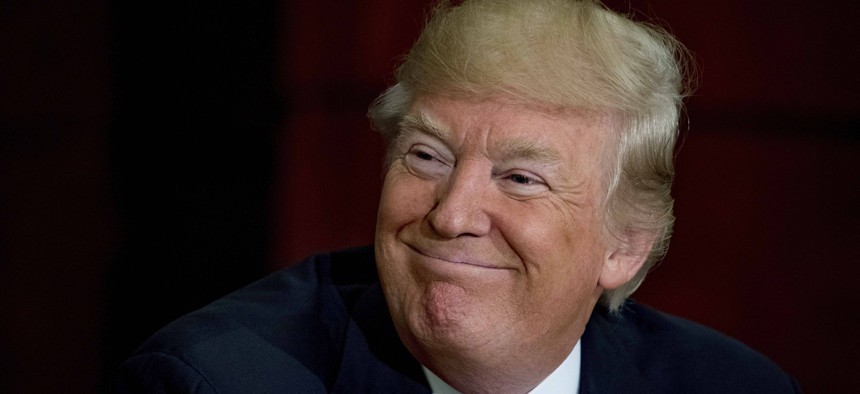Trump's Infrastructure Plan 'Not Dead,' GOP Senator Says

President Donald Trump attends a roundtable on infrastructure at the Department of Transportation, Friday, June 9, 2017, in Washington. AP Photo/Andrew Harnik

Connecting state and local government leaders
"We're very actively working on it," said Sen. Jim Inhofe, who chairs a public works subcommittee.
WASHINGTON — Don't rule out congressional action on the infrastructure plan the Trump administration released earlier this year, a top Republican on the Senate Environment and Public Works Committee insisted on Tuesday.
"It's not dead on arrival," said Sen. Jim Inhofe, an Oklahoma Republican. "In fact, we're very actively working on it right now."
Inhofe, who chairs the Environment and Public Works subcommittee on transportation and infrastructure, made his remarks during an event hosted by the news publication Axios.
The White House proposal calls for about $200 billion of federal spending over 10 years, mostly on new grant initiatives. But it does not identify new revenues that could cover this cost. It also outlines a slate of changes meant to speed up permitting and approvals for projects.
"When you say '$200 billion,'" Inhofe said, "we're gonna get that done."
Lawmakers and the White House have not coalesced around an idea to pay for the infrastructure spending President Trump has proposed.
A number of key Republicans in Congress have voiced skepticism, and outright opposition, to raising the gas tax, which has traditionally been a major source of funding for roads and transit.
Meanwhile, last year's GOP-led tax overhaul and a two-year budget deal that relaxed spending caps are expected to increase deficits in the years ahead, further complicating the financial and political realities of funneling federal dollars to new infrastructure grant programs.
Inhofe suggested that the tax bill would boost economic output and, in turn, help to support spending on infrastructure and national defense.
Transportation Secretary Elaine Chao acknowledged the funding hurdle during remarks at an event on Monday.
"Infrastructure, as the president has said, is extremely important," she said. "The difficulty is: how do you pay for it?"
Chao reiterated that, from the administration's perspective, "everything is on the table" when it comes to financing and funding infrastructure and said that there are 16 to 17 options. "Every single one of them has their advocate," she added. "But every single one of them has their detractors as well.”
The White House issued Trump's infrastructure proposal in February.
After a wave of congressional hearings and efforts by the administration to promote the plan, discussions about it have receded on Capitol Hill as November's mid-term elections approach.
House Speaker Paul Ryan, who is not running for reelection, indicated in March that Republicans in his chamber planned to tackle multiple infrastructure bills this year. But some of the legislation he described was expected to come up even absent of Trump's proposal.
The spending bill the president signed in March for the current 2018 fiscal year upped funding for a range of existing federal infrastructure programs, but it did not provide money for the grant initiatives the White House is pushing for.
Bill Lucia is a Senior Reporter for Government Executive's Route Fifty and is based in Washington, D.C.

NEXT STORY: Providence’s New Loan Partnership to Replace Lead Water Pipes





